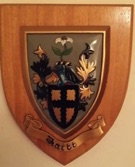Raitt Coats of Arms and Crests
One of the earliest books (though not the first) to mention the Rait Coat of Arms is A System of Heraldry by Alexander Nisbet and published in 1722. Nisbet writes:
The surname of Rait or Rhet, or, a cross ingrailed sable. The first of this name is said to be a German, from the country of Rhetia, from whence the name; and, it is said, to have come to Scotland in the reign of Malcolm IV. and from that king got some lands in the shire of Nairn, which he called after his own name.
In the reign of John Baliol, mention is made by our historians of Sir Gervis Rait of that Ilk. In the reign of Robert III. Sir Alexander Rait of that Ilk, having killed the Thane of Calder, fled to the Merns, and lived under the protection of the Earl Marischal ; his son, Mark Rait, married - Dunnet, heiress of Halgreen, and got with her these lands. David Rait of Halgreen and Drumnagar gets a charter from King James III. of these lands, of whom were descended the Raits, lairds of Halgreen; who carried as above, for crest, an anchor, proper; motto, Spero meliora. Lyon Register.
Mr William Rait of Pitforthie, descended of a second son of Halgreen, or, on a cross ingrailed sable, a hunting-horn of the first, stringed gules; crest, an anchor, proper, ensigned on the top, with a crescent argent: motto, Meliora spero sequorque. Lyon Register.
William Rait, Merchant in Dundee, whose father was a second son of Halgreen, or, a cross ingrailed within a bordure invected sable ; crest, a lily . motto, Sperandum. Lyon Register.
-----------
One of the fullest and most interesting works, however, because it provides actual illustrations is Scottish Arms: Being a Collection of Armorial Bearings, A.D. 1370-1678. Reproduced in Facsimile from Contemporary Manuscripts. With Heraldic and Genealogical Notes by R. R. Stodart. Published in two volumes by William Paterson in 1881.
This work, as originally planned was to have included the arms of the Peers of Scotland from the time of Sir David Lindsay (b 1490-1555), Lord Lyon King of Arms, to the Union (1701). Several reasons prevented the execution of this design, however, the collection as it stands contains a great deal of information as to the bearings of ennobled families extinct as well as existing. In so far as it relates to the Raitts, the relevant Coats of Arms are to be found in the Armorial de Berry (plate 10 - image on left below) and the Earl of Crawford’s MS (plate 99 - image on right below). These images have faded over time. However, the image in the middle is taken from an analysis by J. Storer Clouston on the Armorial De Berry (Scottish Section) which appeared in the Proceedings of The Society of Antiquaries of Scotland, vol LXXII, 6th series, vol 72, 10 January 1938. The author notes that two shields are without a legend at all, but fortunately the arms are again unmistakable. One of these is Rait. The author provides images of all the arms with heightened colours.
Armorial de Berry
The Bibliotheque Nationale of France possesses one of the most valuable heraldic manuscripts in existence. Gilles le Bouvier, its compiler, was born in 1386, entered the service of the Dauphin-Regent, afterwards Charles VII. He was appointed a herald in 1420, and afterwards crowned and created Berry King of Arms in France. He travelled widely, including Scotland. Charles VII. desired his king of arms to make an authentic collection of the bearings of the princes, nobles, and gentlemen of the countries he visited, and the result was this magnificent register. It consists of two hundred and five leaves, nearly half of which are vellum. Commencing with a genealogy of the Kings of France, illustrated by portraits, it gives an armorial of France divided into eight provinces, and containing upwards of fifteen hundred coats. Germany, Spain, Scotland, Italy, England, and the East follow, bringing the total to nineteen hundred and fifty-three. It is fortunate that the intimate alliance between this country and France led Berry King of Arms, to carry out a more extensive visitation in Scotland than in any other country. While he collected only sixty coats in Germany and sixty-four in Italy, he gives a hundred and twenty-two from Scotland. The probable date for the compilation is around 1445 and in it is listed - Rait (or cross engrailed sable).
In the Scottish Arms the following descriptions of Raitt arms and their bearers are given. There are many names listed, but it does not make it clear that they actually used this coat of arms, though the assumption is there. The origin of the surname and the people mentioned in the Scottish Arms are given on the page for Raitt Name.
Rait, A cross engrailed is the bearing on the seal of Sir Gervase de Rait 1292; an early seal of John de Rait has a hunting horn, and that of Mr David Rait, 1591, has a cross invecked.
Workman’s Manuscript gives quarterly sable and azure a crescent argent.
The coat here represented (above left) was matriculated 1672-78 by William (Rait) of Hallgreen; Mr William (Rait) of Pitforthie, a cadet at the same time has a hunting horn of the field stringed gules on the cross.
Mr James (Rait), advocate, acquired Edmonstone, near Edinburgh, of which he had a charter in 1630 to him and Eliza Fouller, his wife. His eldest daughter, Anna, married John Wauchope, a senator of the College of Justice, with the style of Lord Edmonstone and died in 1729. Her arms, registered c. 1672, and displayed at her funeral, are the undifferenced coat.
Interestingly, in another manuscript in the Scottish Arms - the Workman’s Manuscript - an illuminated manuscript in the Lyon Office, compiled about 1565-66 by an unknown hand, there is an entry for Rait of Halgreen:
Rate or Raet - Quarterly, sable and azure, a crescent argent at fess point.
Unfortunately, the arms are not one of those depicted in the manuscript. The House of Names website says that the name Raet (with many variations including Rait and Raitte!) is first found in East Flanders, a province of Belgium and claims that among the first settlers of this family name were William Rhett who came to North America in 1694, George Rhett who came to Carolina in 1671, and John Raet who arrived in Halifax, Nova Scotia. However, the coat of arms shown bears no resemblance to that above, nor to the Rhetts below.
-----------
Other Rolls
In the Armorial de Gorrevod, dating from about 1450, and in the possession of the Royal Library of Belgium, there appears a coat of arms that is very similar to that of Gervaise de Rait. And in the Holkham manuscript (a text in Latin by Nicholas Upton entitled De Re Militari) dating from the second half of the 15th century and in possession of the Bodleian Library, University of Oxford, there is also a coat of arms similar to that of Sir Gervaise.
Although the coat of arms for Sir Gervaise de Rathe was or, a cross engrailed sable, the arms for his brother Sir Andrew de Rathe are given in both the Collin’s Roll (1296) and St George’s Roll (1295) as argent, a cross indented gules. The same coat of arms appears to have been borne also by Sir John de la Linde, Sir John FitzHenry and several others. (See Brian Timm’s Rolls List).
Rait of Halgrein’s arms are included the Slains Roll as being granted in 1565. The arms for Rait of Hallgreen are also included in The Science of Herauldry by George Mackenzie of Rosehaugh, first published in 1680.
Another early work is that of Joseph Edmondson who published his two volume treatise A Complete Body of Heraldry (with an extremely lengthy title) in 1780. In volume 1, we find mention of Rat - Ar. a chev. engrailed gu. This coat for Rat (also Rate) is given in other works, however, mistakes and confusion surround these early descriptions of arms. On the same page, there is mention of another, more familiar, coat - that of Mohun and also Gifford - which is described as Or. a cross engrailed sa. (See more under heraldic symbolism.)
-----------
Although described as a bearing une croix engresle, Andrew de Rat (d after 1304) bore a cross indented gules upon an argent field. He was a Scot, and a member of Edward I's household in the earlier part of his reign. His elder brother, Sir Gervaise de Rathe, was Constable of Invernairn in 1292, rendered homage in the Ragman Roll, and his seal bearing a cross engrailed is still extant. The name seems to have died out in the Moray Firth area, and by the 16th century the principal family was Rait of Halgreen in the Mearns which bore Or, a cross engrailed sable. (From: Scotland's Historic Heraldry by Bruce A. McAndrew. Boydell Press, 2006)
-----------
The British herald, or, Cabinet of armorial bearings of the nobility and gentry of Great Britain and Ireland, published in three volumes in 1830 by engraver Thomas Robson lists the following coats of arms in volume 2:
Rait, [Dundee, Scotland ; Lyon Register] or, a cross engr. within a bordure invecked, sa.—Crest, a lily ppr. Motto, Sperandum.
Rait, or Rhet, [Halgreen and Drumnagar, Scotland; Lyon Register] or, a cross engr. sa.—Crest, au anchor ppr. Motto, Spero meliora.
Rait, [Pitforthie, Scotland ; Lyon Register] or, on a cross engr. sa. a hunting horn of the first, stringed gu.—Crest, an anchor ppr. ensigned on the top with a crescent ar. Motto, Meliora spero sequorque.
Raitt, or, a cross engr. sa.—Crest, a dolphin, naiant, or.
In volume 3, there is entry as follows:
Rait, Crighton, (Glasgow) quarterly; first and fourth or, a cross engr. sa. for Rait; second and third, ar. a lion ramp, az. armed and langued gu. for Crighton. - Crest, an anchor ppr. Motto, over the crest, Spero meliora. (See also under Illustrious Raitts).
-----------
However, in The general armory of England, Scotland, Ireland and Wales; comprising a registry of armorial bearings from the earliest to the present time by Sir Bernard Burke and published in 1884, we find only:
Rait or Rhet (Halgreen and Drumnagair, co. Forfar, Lion Register). Or, a cross engr. sa. Crest - An anchor ppr. Motto - Spero meliora.
Rait (Dundee, Scotland, Lion Register 1672). Or, a cross engr. within a bordure invecked sa. Crest - A lily ppr. Motto - Sperandum.
Rait (Pitforthie, co. Forfar, Lion Register). Or, on a cross engr. sa. a hunting horn of the first, stringed gu. Crest - An anchor ppr. ensigned on the top with a crescent ar. Motto – Meliora spero sequorque.
Rat. Ar. a chev. (another, a cross) engra. gu. (This version with cross is the same as Sir Andre de Rathe, the brother of Sir Gervaise.
Reath (Edmistoun). Or. a cross engr. sa. Crest - A sheaf of wheat or. Motto - Industria ditat.
In a later book An ordinary of arms contained in the public register of all arms and bearings of Scotland by James Balfour Paul and published by William Green & Sons in 1895. there are the following Coats of Arms listed:
Rait of Pitforthie, or, on a cross engrailed sa. a hunting-horn of the first, stringed gu.
Rait of Hallgreen, or, a cross engrailed sa.
William Rait, merchant, Dundee, or, a cross engrailed within a bordure invected sa.
Raith (impaled by Wauchope), or, a cross engrailed sable. (This particular person was James Rait or Raith to whom the estate of Edmonstone in Midlothian was sold in 1626. In 1664, his daughter and heiress Anna married John, second son of Sir John Wauchope of Niddry Marshall, by which marriage the estate of Edmonstone passed to the Wauchopes.)
-----------
In various volumes of the Encyclopaedia heraldica; or, Complete dictionary of heraldry published in 1828 and authored by William Berry and Robert Glover, we come across much the same information as in other works.
Rait, or Rhet, or, a cross, engr. sa.
Rait, [Pitforthie, Scotland,] or. on a cross, engr. sa. a hunting-horn of the first, stringed gu. Crest, an anchor ppr. enfiled on the top with a crescent ar.
Rait, [Dundee] or, a cross, engr. within a border, invecked, sa. Crest, a lily.
Rait, or Rhet, [Halgreen and Drumnager, Scotland] or, a cross engr. sa. Crest, an anchor ppr.
Raitt, or, a cross engr. sa. Crest, a dolphin naiant, or.
-----------
The crests for various coats of arms are separately described and illustrated in Fairbairn's Crests of the Leading Families in Great Britian and Ireland and their kindred in other lands - compiled from the best authorities by James Fairbairn and published as two volumes in one by the Heraldic Publishing Company in 1911 (earlier editions were also published). The following crests are given for Raitt.
Rait, Sco., an anchor, ppr. Spero meliora.
Rait, Sco., a lily, ppr. Sperandum
Rait, Sco., an anchor, ppr., ensigned on top with a crescent, ar. Meliora spero sequorqvex.
Rait, James, Esq., of Anniston House, Forfars., an anchor, ppr. Spero meliora.
Raitt, Eng., a dolphin, naiant, or.
In Volume 2 of the sixth edition of Burke’s History of the Landed Gentry published in 1879 under Rait of Anniston House, we find:
Rait, Major Arthur, of Anniston House, county Forfar, J.P. and D.L. for Forfar, and late Major Royal Horse Artillery, C.B., born 1839; married in 1877, Kathleen Georgia, only daughter of the Hon. Walter Arbuthnott, of Hatton, co. Kincardine and had a son Walter Garnet, born 1878.
Lineage —This is a branch of the ancient family of Rait of Halgreen, co. Kincardine, which derived its name from the lands of Rait, cos. Nairn and Perth.
Dr. George Rait (brother of Rait of Halgreen, county Kincardine) m. Catharine, daughter of Bishop Douglas, of Dunblane, and had one son, William Rait, Esq. who married Agnes Lyon. They had one son, John Rait, Esq. of Anniston (died 1814) who married in 1799, Elizabeth Guthrie. Their children included James Rait, Esq. of Anniston House, J.P. and D.L., Capt. 15th Hussars, Major Forfarshire Militia, born 1805; married 1838, Lady Clementina Drummond Ogilvy, 2nd daughter of David, 5th (or 7th) Earl of Airlie. James died in 1877 and was succeeded by his eldest son, Arthur John Rait (born 1839), now of Anniston House. Another son, William Rait, was born in 1847.
Arms—Or, a cross engrailed sa. Crest—An anchor ppr. Motto—Spero meliora. Seat—Anniston House, Arbroath.
The above arms of James Rait of Anniston impaled with those of Clementina Ogilvy (argent, a lion passant guardant, gules, crowned, or) are to be seen above the kirk door in Inverkeilor.
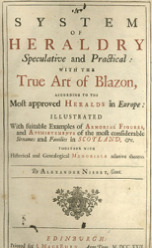
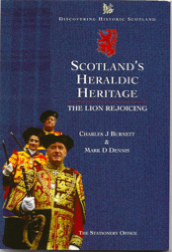
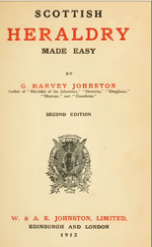
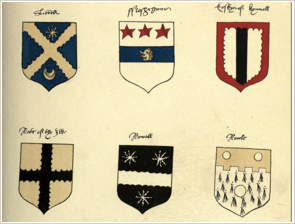
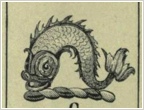
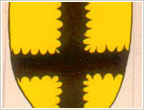
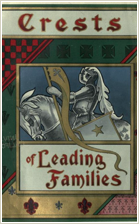
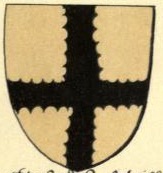
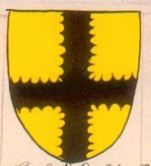
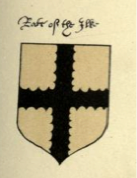
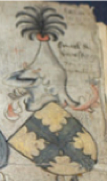
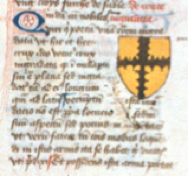
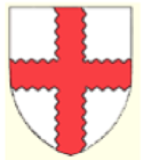
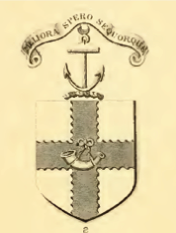
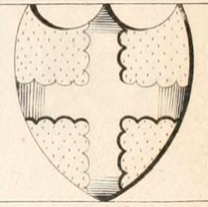
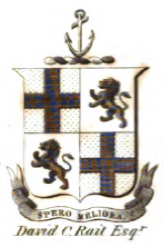
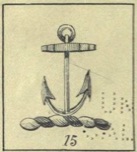
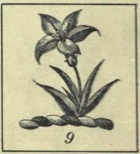
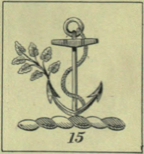
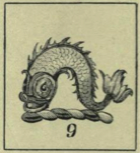
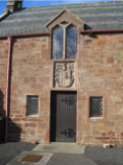
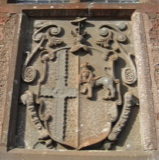
Both photos
© Lindsay Raitt
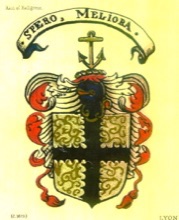
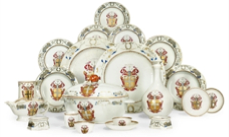
© Christies
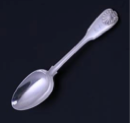

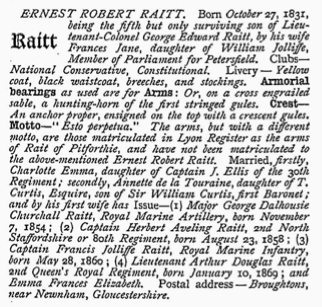
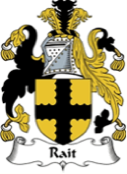
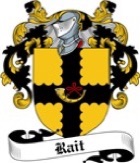
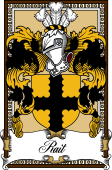
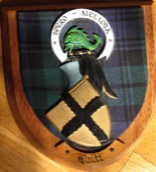
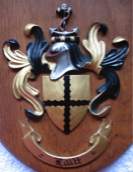
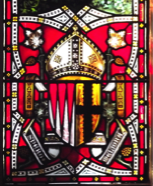
© Pat Carson
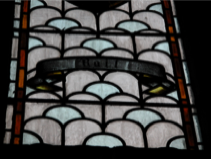
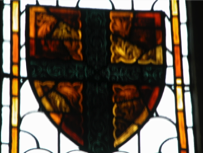
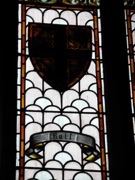
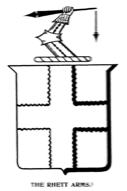
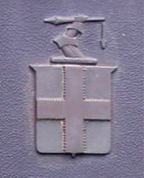
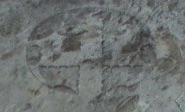
© John C. Irish
© John Schneider
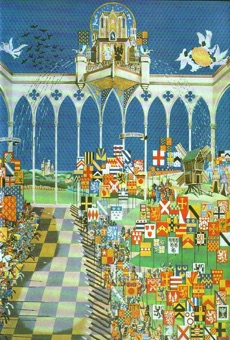
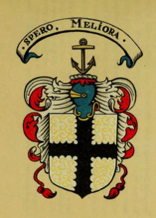
Heraldic symbolism of Coats of Arms
There is a wide body of literature that describes the meanings and symbolism behind the metals, colours, crests and creatures of the shields and coats of arms borne throughout the ages. In so far as they relate to the Raitt Coats of Arms some explanation of this heraldic symbolism, together with other Coats of Arms that are very similar to those of the Raitts (i.e. a black cross on a gold ground) but borne by other knights are included on a separate page. The page also gives a brief description of the differencing of arms - which just might indicate that Sir Gervase de Rait was third generation.
Just to recap, the Raitt arms borne by members of the Scottish family are mentioned in several ancient armorial rolls (with varying spellings):
Andrew de Rat (also given as Andreu de Raat) - St George’s Roll (dated c 1285); Lord Marshal’s Roll (c 1295); Collin’s Roll (c 1295); and the Ragman Roll (1296)
Gervaise de Rathe - Ragman Roll (1296); Ragman Roll Seals (1296); and Scottish Armorial Seals (1904).
Rait of Hallgreen - Armorial de Berry (c 1445); Slains Roll (mid-16th century); Hague Roll (c 1590)
In addition, the name Rait or Raitt is understood to be listed in the Battle Abbey Roll which is supposed to list the knights who accompanied William the Conqueror to England and who fought at the Battle of Hastings in 1066 (see Raitt Context under Jordan de Raat).
Other Raitt Arms
It would appear that there are other Raitt coats of arms, similar to each other, which seem to have originated in Bavaria and which have also been “adopted” by a couple of Raitt families in the United States. I have chosen to include them and details of the families on a separate other Raitt arms page. Fuller details on the Bavarian Raitts are also included elsewhere, as are details of the Maryland and Maine Raitts who claim these other arms
Related Coats of Arms
Of course, the Raitts were not the only ones to have Coats of Arms. Many other families did too and new Coats of Arms were created when families intermarried. As seen above David Crighton Rait merged the Rait arms with the Crichton arms, and the Rait arms were impaled by those of the Wauchope family. Also the arms of Rait (or, a cross engrailed sable) were impaled with those of Ogilvy (argent, a lion passant guardant gules crowned or), for James Rait of Anniston and the Honourable Clementina Ogilvy, daughter of David (7th) Earl of Airlie, with the motto: "Spero meliora" - "I hope for better things". There is also a Rait-Mowat coat of arms, and there were different arms for the name Raith.
And an armorial book plate dated 1797 belonging to a Mr Falconer apparently bears four lozenges below his shield: 1681 Dalmahoy of Dalmahoy; 1731 Wilbraham of Delamere; 1771 Edmunds of Worsborough; and 1797 Raitt formerly of Halgreen. The fact that they are lozenges would signify that it was a woman named Raitt who married into the Falconer family.
Some of the families that various Raitt ancestors married into that had their own Coats of Arms include (with various spellings): Crab, Munro, Durward, Doig, Purvis, Wilkie, Sangster, Mikieson, Smith and Scorgie. Descriptions of these related Coats of Arms can be found on the following page. The Coats of Arms of other more distant families (such as Hutcheon, Kinnear, Millar, Smith, Robertson, Lawrence) can be found after that.
An article entitled "The Descendants of Col. William Rhett, of South Carolina" appeared in The South Carolina Historical and Genealogical Magazine, v4, n1, January 1903, pp36-74. On p36, the Coat of Arms of William Rhett (1666-1722) are shown together with the following text:
“These arms are taken from the tombstone of Co. William Rhett in St Philip’s church-yard (western), Charleston, SC. No tinctures are indicated thereon but the best information is that the field is gold and the engrailed cross black. The motto is Aut faciam, aut periam.
Note by the Editor: The seal of Roger Moore, with Moore impaled with Rhett, his wife, is extant. It shows the engrailed cross sable, but does not show the field or. That, however, might have been the fault of the engraver, who probably did not recognize the importance of the dots on the field. The following arms are given in Burke’s General Armory (1851) for Rhet: Rait, or Rhet (Halgreen and Drumnager, Scotland; Lion Register), Or, a cross engr. sa”
A similar tombstone is also to be found in Magnolia Cemetery, Charleston, South Carolina.
The same arms are also given in Crozier's General Armory: a Registry of American Families Entitled to Coat Armor. Edited by William Armstrong Crozier. Published 1904.
RHETT. South Carolina.
Col. William Rhett, Receiver-General. 1662-1722.
Or, a cross engrailed sable.
Crest - An arm in armor holding a broken tilting spear, head of spear hanging downwards.
Motto -Aut faciam, aut periam.
Furthermore, in An Alphabetical Dictionary of Coats of Arms belonging to Families in Great Britain and Ireland forming an extensive Ordinary of British Armorials by John W. Papworth and published in 1874, the Coat of Arms for G. Rait or Rhet, Hallgreen; and Drumnager, Scotland (as well as Reath, Edmistoun) is also given as Or, a cross engrailed sable.
See also the earliest known entry for the Rait or Rhet family in the Families of Scotland under Raitt Name, as well as details on the American Raitts page under South Carolina.
-----------
It is not known how and why the various crests came to be associated with the Raitts of Hallgreen, Pitforthie, Anniston etc, but it is likely that when designing their Arms, the later would-be bearer would have delved into the family history to some extent as best he could. Thus the Raits of Hallgreen would have known their ancestors shield of black cross on gold background. As for the crests, an anchor was symbolic of hope and although it could also signify a mariner, this is not the case for the Raits of Hallgreen, many of whom were ministers rather and sailors (although later Raitts, particularly in my own family ancestors, were mariners, while in the Anniston branch they were soldiers.) In line with this meaning of the anchor goes the motto Spero melioris - I hope for better things. The hunting horn, used in various Raitt crests could be an attempt to claim descendancy from, or at least recognize him as a family member, Roger de Rathe of Ayr, whose seal showed a stringed hunting horn (though the name John de Rat is (erroneously?) listed against the seal instead.
-----------
An interesting recent find was the colourful painting by Dan Escott (1928-1987) of the knight and nobles who fought at of the Battle of Crécy in northern France in 1346. King Edward III's knights had a crushing victory over the French, several thousand of whom were killed against only some 50 or so for Edward's men. One of these fallen was, as we already know, Sir Alexander de Rathe. And the banner in the bottom right corner - a black engrailed cross on a gold background - shows, presumably his arms - the same as those of Sir Gervaise de Rathe. Of course, had it been a 14th or 15th century painting, contemporary with the battle, then there would have been some conclusive proof of some kind of continuity. But all the artist had to do was to look at the roll of those participating and/or killed paint those currently held for the family.
It seems that in 1350, the Coat of Arms of John Rait, Bishop of Aberdeen, was Or, a cross engrailed sable, with a bend azure. Where the bend azure originates is not known, though it may be a representation of the blue background used anciently for the Arms of Aberdeen.
-----------
In late 1894 it was proposed that the side windows in the new Graduation Hall in the New
Buildings at Mariscal ollege, Aberdeen, should complement the main stained glass window (which provided a near complete heraldic history of Marischal College) by being devoted to King’s College in order to represent more fully its. This was approved in early 1895 with one window in the Mitchell Hall being dedicated to the name of Rait. The armorial coat was intended to commemorate the connection of the following members of the family of Rait with King’s College:
David Rait, Seventh Principal of King’s College, 1593. Humanist about 1580. Regent and Sub-principal from 1583, until he became principal. Orem says he was “of the house of Hallgreen in the Mernis...afterwards graduated Doctor of Divinity, being the first that received the degree after the Reformation. He lived until Anno 1632, having borne office within the college as Regent, Sub-Principal and Principal about fifty-years.”
John Rait – Regent of King’s College about 1559
William Rait – Humanist of King’s College 1587
James Rait – Humanist of King’s College, 1604, and Regent 1610, Promoted to be minister of
Aberluthnot, 1617, D.1642
William Rait – Eleventh Principal of King’s College, 1661. Son of the last mentioned, appointed regent, 1641. Appointed Principal, but only held the appointment one year, becoming, in 1662, minister of the third charge at Dundee. D. 1679
Alexander Rait – M.A., King’s College, 1722. Professor of Mathematics, 1732. Regent of King’s College, 1734. D. 1751
-----------
Elsewhere, in the tome by Arthur Charles Fox-Davies published in 1895 and entitled “Armorial families; a complete peerage, baronetage, and knightage, and a directory of some gentlemen of coat-armour, and being the first attempt to show which arms in use at the moment are borne by legal authority”, we learn that:
Arthur John Rait, Esquire, Companion of the Most Honourable Order of the Bath, Lieutenant-Colonel {retired) Royal Artillery, Justice of the Peace and Deputy-Lieutenant for the county of Forfar, was born in 1839 and was the eldest son of James Rait of Anniston, Captain 15th Hussars and Lieutenant-Colonel 1st Lancers British Auxiliary Legion in Spain, and Knight of St. Ferdinand. Armorial bearings as used, but which have not been matriculated to Colonel Rait, are for Arms: Or, on a cross engrailed sable, a hunting-horn stringed gold. Crest- An anchor in pale azure. Motto " Spero meliora." He was entitled to wear the Military Cockade.
In the same book mention is made of a similar Coat of Arms for Ernest Robert Raitt, born in 1831, the fifth but only surviving son of Lieutenant-Colonel George Edward Raitt. Armorial bearings as used are for Arms: Or, on a cross engrailed sable, a hunting-horn of the first stringed gules. Crest: An anchor proper, ensigned on the top with a crescent gules. Motto: “Esto perpetua." The arms, but with a different motto, are those matriculated in Lyon Register as the arms of Rait of Pitforthie, and have not been matriculated to Ernest Robert Raitt.
A third edition of this book by Arthur Charles Fox-Davies and published in 1899, entitled Armorial families; a directory of some gentlemen of coat-armour, showing which arms in use at the moment are borne by legal authority has the following entry (which does not seem to appear in subsequent editions of this work.)
The coat of arms for Rait shown below left is recorded in Sir Bernard Burkes General Armory. Ulster King of Arms in 1884. Next to it is one with a hunting horn - yet another variation belonging to Rait of Pitforthy. Next to this at right is a coat of arms for Raitt. And below these are three other Raitt crests - one with a dolphin rather than anchor and with the motto Spero Meliora (I aspire to greater things); in the middle is one with an anchor; and on the right the crest is a lily (Raitt of Dundee).
In the Lady Chapel in the Cathedral Church of Saint Paul, Dundee, a stained glass window remembers two Bishops of the Diocese of Brechin - one panel bears the Coat of Arms of Bishop James Rait (1742–1777) with the motto ‘Spero memora’ (I hope for better things). The arms are those of the family of Rait on the right and likely the Coat of Arms for Brechin (town) on the left. Brechin cathedral was originally dedicated to the Holy Trinity and this is commemorated in the Coat of Arms of the town which has a gold shield with three red rays converging at a point near the base. Since the second bishop’s arms in the Lady Chapel also have the same left half, perhaps it was a convention for Bishops that they added the arms of their see or city to their own arms.
-----------
In 2008, a Qianlong Chinese export armorial part dinner service, dated 1745, bearing the arms of Rait or Rhet of Halgreen and Drumnager, with the motto Esto Perptua, was sold by Christie’s.
An anchor, being the crest of Raits of Hallgreen and Drumnagir, as well as of Anniston, appear on a George IV sterling silver spoon manufactured in London by William Chawner in 1830. The flatware may well have been commission by James Rait of Anniston.
-----------
Plate III in the Lyon Register gives the following coat of arms for Rait of Hallgreen c. 1673 (below left). The same arms are noted in the Register of all Arms and Bearings for Rait of Halgrein, 1672-7, in Stevenson's Heraldry in Scotland, vol 1 (1914) (below right).
